I have been procrastinating about these “trawler transformation” blog posts, especially this first one on the mechanical renovations.
Disclaimer – Although I enjoy the final outcomes in terms of safety, efficiency, and convenience, I’m not very knowledgeable about these boat projects. I listen as the captain describes each step, each stumbling block, each success; but I don’t really understand much of it. I try, I really do try. Therefore, if you are interested in more details, you will just have to email Captain Al. If you aren’t interested in these mechanical projects at all, wait for the next blog post!
So, let’s begin with these technical, somewhat unseen, yet very necessary, changes in the various systems.
Engines and Things — Back in September, we had that “little” problem with the line caught in the prop, resulting in an injured transmission. We limped up to Portland at 1100 rpm for her winter storage.

It turned out that the engine issue was not caused by the transmission at all. The transmission was declared to be like new inside. The problem was a loose and worn cutlass bearing that Al had to cut out. The transmission guy pressed it into its housing because Al could only get it halfway. Al carefully photographed the engine and transmission as he removed it so that he had a reference when he put it all back together.

Engines are complicated machines (it seems to me), but Al is very comfortable with diesel engines after working on our last three boats. They are real workhorses and will run for a long time. This diesel engine is by far the largest, a Cummins 220 hp compared to the Morgan’s Yanmar 44 hp and the Catalina’s Westerbeke 25 hp. One of the positives about the Mariner Orient was the low engine hours at the time of purchase. Any engine requires constant maintenance. Al keeps asking me if I want to learn to change the oil, but I can live a full and happy life without doing that.
When Al readied the engine for launching this spring, he changed the impeller in its water pump as part of his regular spring routine. Noticing that two blades were missing, he went on a search to find the blades in the water hoses of the cooling system. Those missing blades could block the water flow and cause the engine to overheat.
Look what he found —
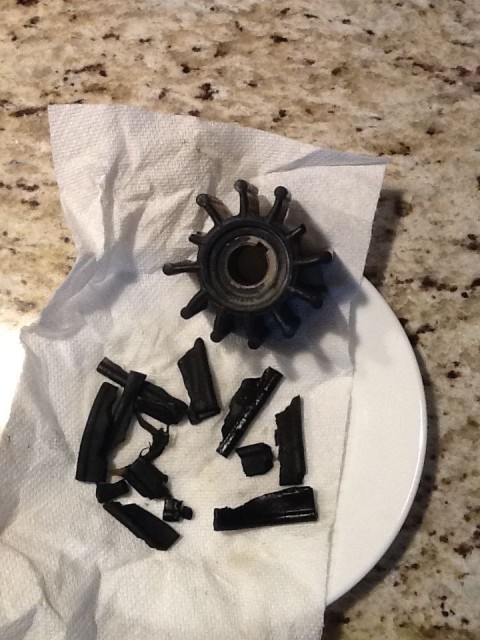
Power! When I think of batteries and what they provide, I think of a song written by Eileen Quinn, a singer/songwriter/cruiser who writes “Music for Sailors and Normal People.” She and her husband, David, are entertaining and talented. If you are a sailor, her music will strike a chord with you and you can truly appreciate the lyrics. The lyrics to her song “Power” are a good way to begin this blog post about our batteries:
You need me more than you think.
I am with you always,
Hour by precious amp hour.
You might as well admit it,
You know I’ve got the power over you.
Baby, I’m your wind, I’m your sun,
I’m the battery bank that makes you hum –
I’ve got the power over you
I crank up your engine.
I make your water pump.
I light up the night and everything you’ve got.
I’ve got you plugged into me,
I’ve got you electrified.
You couldn’t live without me now even if you tried
I got the power over you.
The existing “house” battery on the boat was too old and breathed its final gasp. Batteries are VERY important. They provide the power to start the engine and the generator, run the boat’s electronics, eg. chartplotter, depthfinder, autopilot, windlass, bowthruster, refrigeration, lights, and charge the assorted personal electronics such as phones, iPad and laptop. Bottom line – the batteries are critical to living comfortably onboard.

We replaced the old “house” battery with two golf cart batteries and then added a new second house battery of 4 golf cart batteries under the bunk in the guest cabin. House batteries are designed to provide a steady amount of current over a long period, such as running the refrigeration and lights while at anchor .
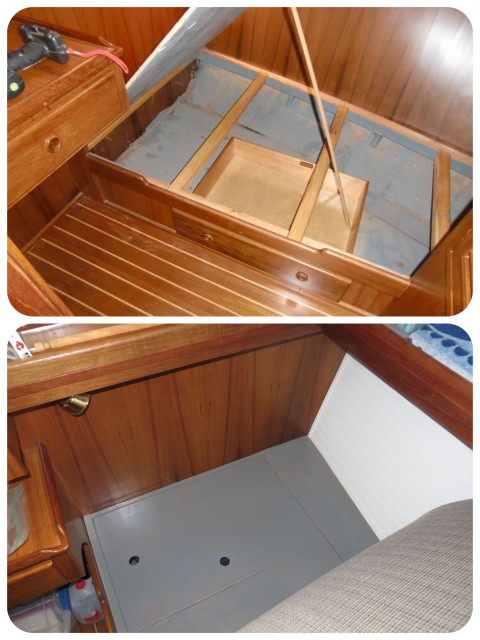
With new batteries and solar panels in place, we should have sufficient electrical power for most of our needs. The solar panels have been able to keep up with our needs quite nicely so far. We have been using about 30-34 amp hours overnight for running the main refrigerator/freezer with some lighting. By noon, on a sunny day, we are fully charged at 100% again. Hey – Why can’t I have a blowdryer and curling iron on the boat??
Remember when Al moved the inverter from the engine room (very hard to access quickly and easily) and moved it into one of the steps near the galley? That inverter is what converts 12 volt power into 110 power which is what we use in houses. That would be what I plug my blowdryer and curling iron into. Just saying………..
Al had already installed one xantrex meter to monitor the batteries. Now that we have two house banks he added a second xantrex meter. We can check their status at a finger’s touch and know how much is going in and how much is going out.
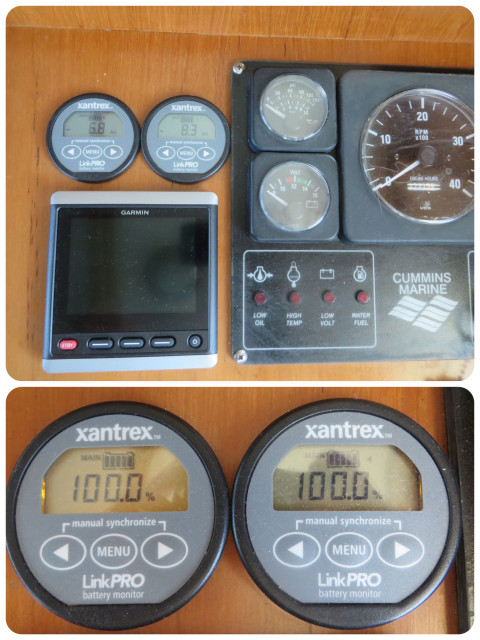
The electrical panel has many switches, knobs and controls. All those switches turn the power on and off for anything that requires electricity. This is one of the first things we do when we get on boat and the last thing we check when we leave.
- The red light above the panel indicates that the batteries are charging through the solar panels.
- The white light below the panel is to remind Al that he left the engine room lights on down below. He decided that was a necessary feature after forgetting more than once.
Speaking of electricity, Al also installed USB outlets for charging the ipad and cell phones. Behind the head of our bed in the master cabin and up on the flybridge for the ipad when using it for navigation.

Navigation The Garmin chart plotter is now permanently installed at the lower interior helm. Al found one just like our old one, only newer and in excellent condition, on eBay. There are newer , fancier models but the 5212 has worked well for us and there won’t be a learning curve. With two helms (one up and one down), we needed navigational electronics in both locations. To date, we have been using an iPad for navigation when up on the flybridge, like many people now do. Al is searching for a second bracket (on eBay) to mount on the flybridge in case we choose to move the Garmin up there when necessary. It is just too costly to add a second full chart plotter. Just for the record – I do understand the navigation equipment and do just as much plotting and navigating as the Captain. Sometimes more.
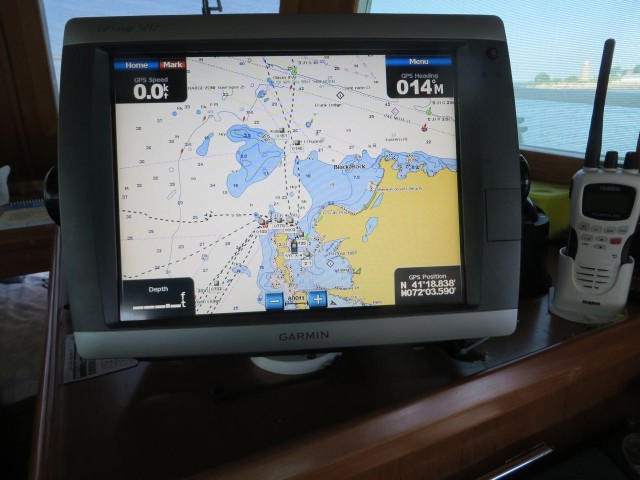
We kept our AIS (Automatic Identification System is an automatic tracking system used on ships and by vessel traffic services for identifying and locating vessels by electronically exchanging data with other nearby ships, AIS base stations, and satellites) system from the sailboat and then learned that we could not reprogram it ourselves (sad news for do-it-yourselfers.) We had to send it back to England to Digital Yachts, the manufacturer. After they reconfigured it to the trawler’s specifications, we still had to get into its software and add a few more details before it would function properly.
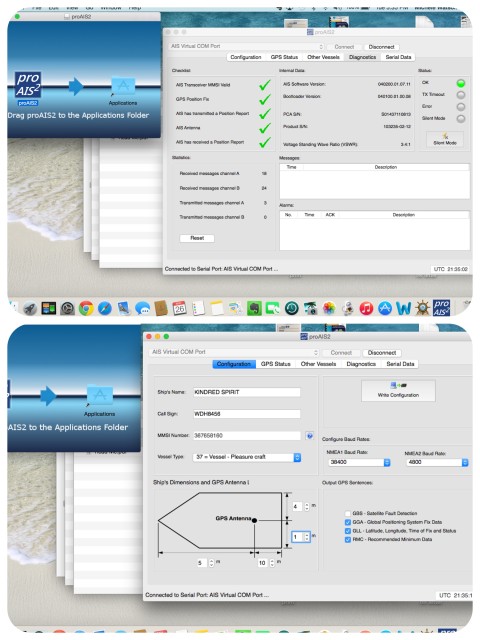
When AIS is connected to the chart plotter, it allows us to see other boats that have AIS; very useful when traveling among commercial vessels. The other ships show as little green triangles. You can then touch the triangle and and a new screen appears with that vessel’s pertinent information such as name, MMSI #, type, bearing, speed.
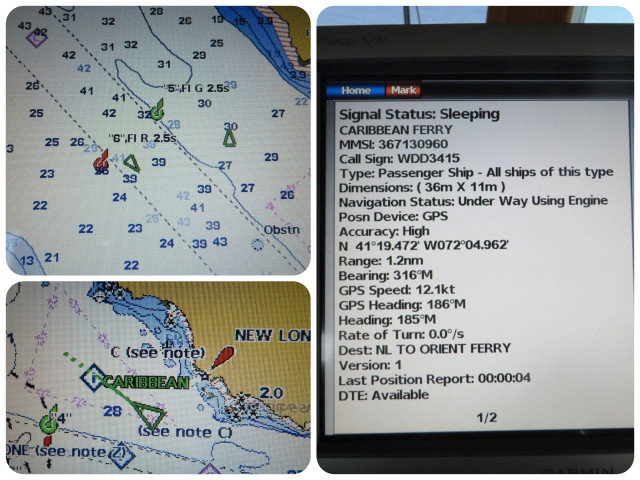
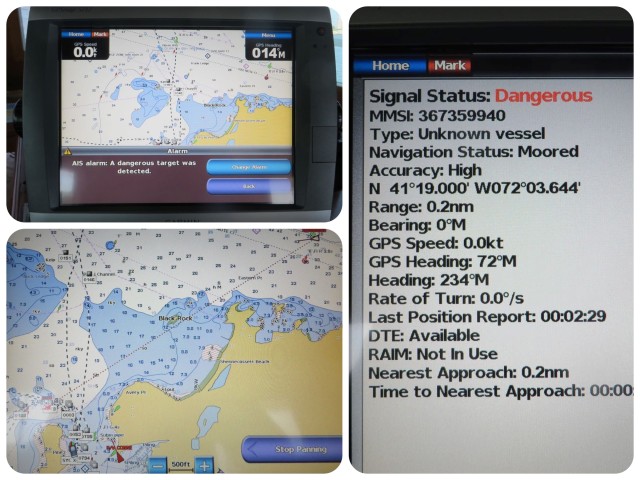
As thorough as we were when the boat was surveyed, somehow we missed the fact that there was no autopilot. We have had autopilot on the previous two sailboats. It is a very, very nice thing to have in your navigational electronics package. Autopilot can usually steer the boat straighter than human arms during long stretches of travel. Do not be concerned – we do not turn it on and go take a nap. We continually watch and make adjustments to the course, but our arms do not get so tired on a long trip. Installing the autopilot was Al’s biggest challenge because he had never worked on any hydraulic system before this. After many hours of research and trial and error, he was successful. The only task left was to calibrate the system out on the water.
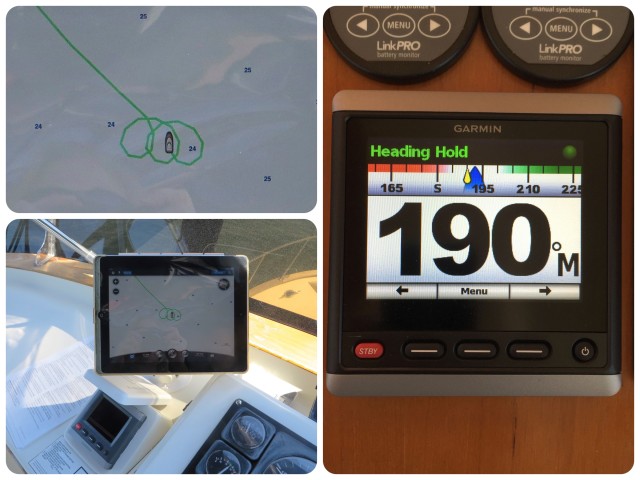
Tanks and Plumbing — Having fresh water on a boat is another critical need. Based on my past experiences while watching power boats at the gas and water docks, there is an inverse relationship between power and sail – power boats carry more fuel than water, while sailboats carry more water than fuel. This trawler can carry 300 gallons of diesel fuel and 140 gallons of water, or so the specs read.) Our Morgan sailboat had a single 50 gallon fuel tank and carried 180 gallons of water.
We suspected that the water tanks needed a thorough cleaning, so one of Al’s first tasks, after the boat was hauled, was to tackle this job and remove any residual yucky sediment still remaining in the bottom. Al’s long arms fit through the inspection port so that he could get inside the stainless steel tanks and scrub them out. Lots of fun!
While working on the water tanks, Al pondered their size. Seemed to him that they might be larger than the stated 140 gallons. Ah Ha! A math problem! He took careful measurements of one tank, which was naturally not a simple rectangular prism, but rather a composite prism – rectangular prism and right triangular prism. After converting the total cubic inches (29,400) by 231 cubic inches per gallon………….. One tank would hold 127 gallons. Which means that two tanks carry 252 gallons of water. WooHoo! That’s a lot more than the stated 140 gallons. He also added a water filtration system in the galley so that we could have pure drinking and cooking water.
Another very important tank is the holding tank. For those of you who are not familiar with boats, the holding tank is the tank that “holds” the waste water from the toilet, sometimes called “black water” although it is really more brown than black. In his deep investigations into the netherworld of the enormous engine room below the salon floor, Al traced the toilet hose – 20 feet of unnecessary hose that ran from the toilet to the back of the boat and then forward again to the holding tank. Since the hosing needed to be replaced anyway, he removed the old and replaced it with a length of shorter new marine waste hose. No smells at all!
The toilet on this boat is an electric flush that works with the push of a button – that red button. Much fancier than our other boats with their manual pump flush. Also means that more can go wrong. Al installed a “liquid level monitor” next to the flush button so that we can monitor the holding tank and know when we need a pump-out. (I never really thought that I would be writing about holding tanks and toilets on this blog, but they are part of boating.
Finding storage spaces – While working with all these mechanical systems below the salon floor, Al also cleaned and painted the “basement” area. There is a huge space below the aft cockpit (the covered deck area at the rear of the boat.) Great storage for the larger things you want to carry with you such as a folding table and chairs, beach chairs, tools, and stuff.
Wifi Connecting – The ability to connect to wifi from a boat presents some challenges unless you can afford to pay for mucho gigabytes of cellular data. As members of SYC we have free secured internet, but it can be hard to access out on our mooring. We have been using a marine wifi system from IslandTime called the Ubiquit Bullet, a booster, coupled to a marine antenna and a Netgear router, and secured with a password. This booster can find wifi signals within a specified range and amplify them. It is becoming increasingly difficult to find free wifi signals while traveling, but we occasionally do; and when we choose to pay for wifi, this helps us get a stronger signal. That was really important in the Bahamas when we were using OII (Out Island Internet). In today’s world, very few of us are willing to go without our internet and email fix.
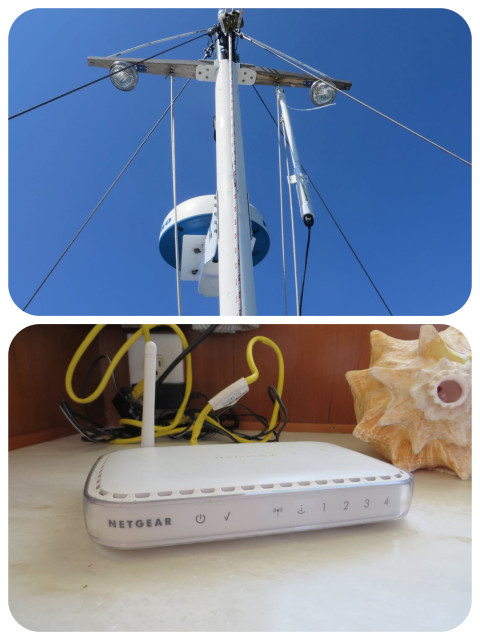
Well, I am now exhausted from writing about all of these technical boat projects. Imagine how Al must feel after doing all of them??? In less than a year!
And there is more to come……………..
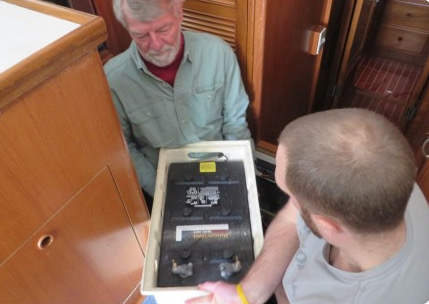

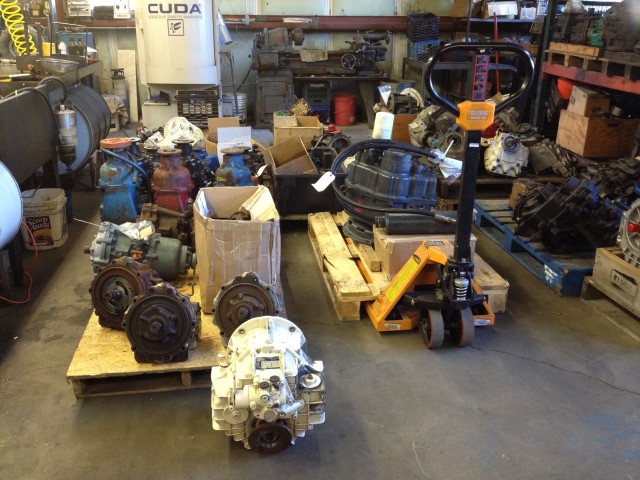
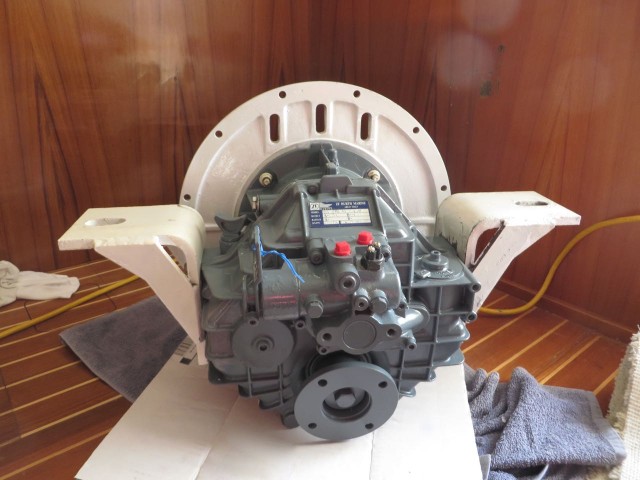
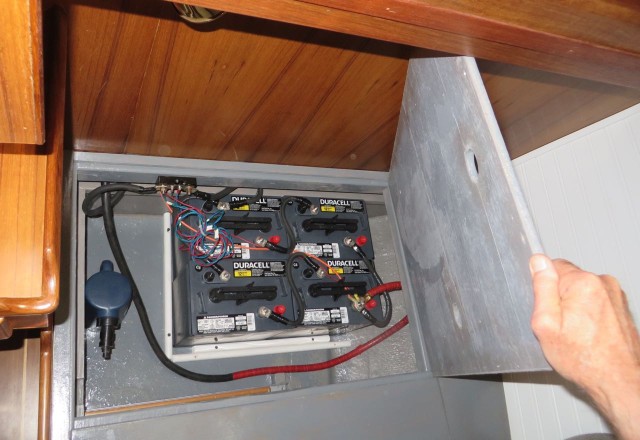
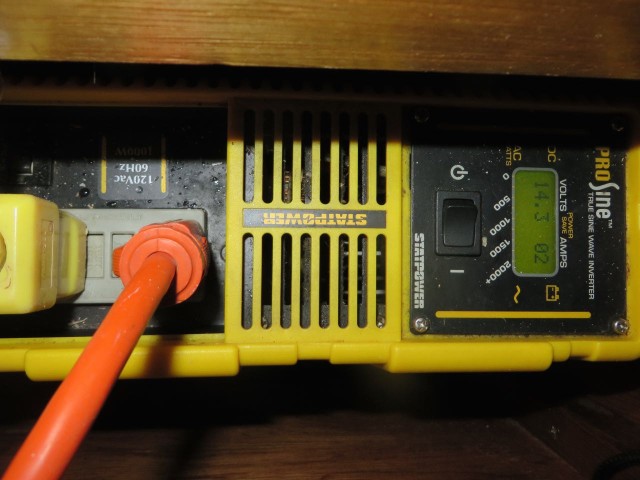

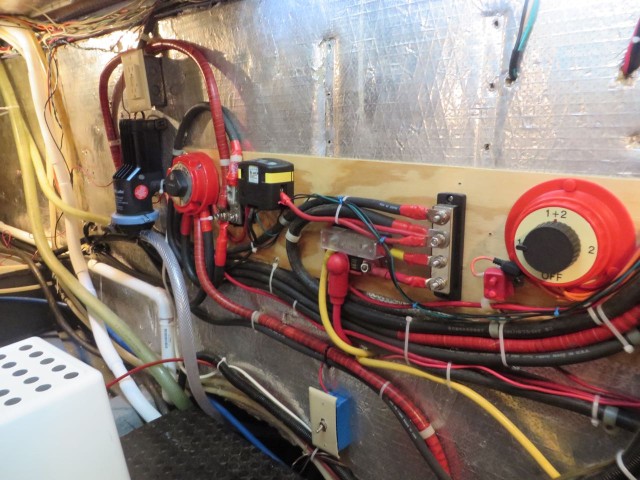
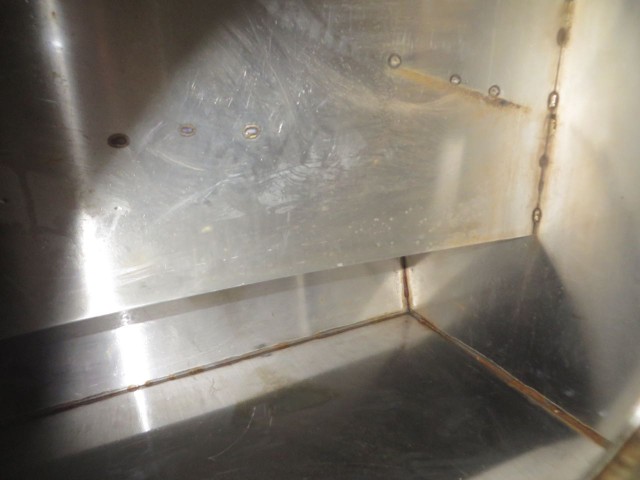

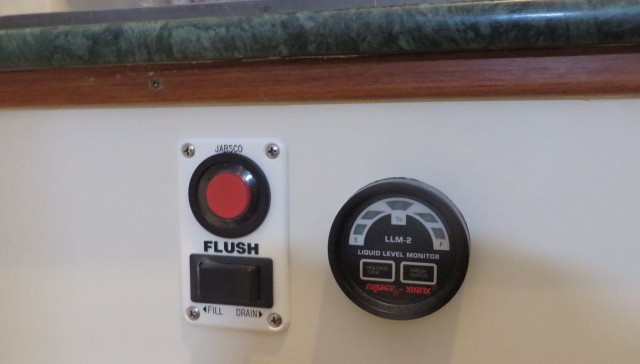
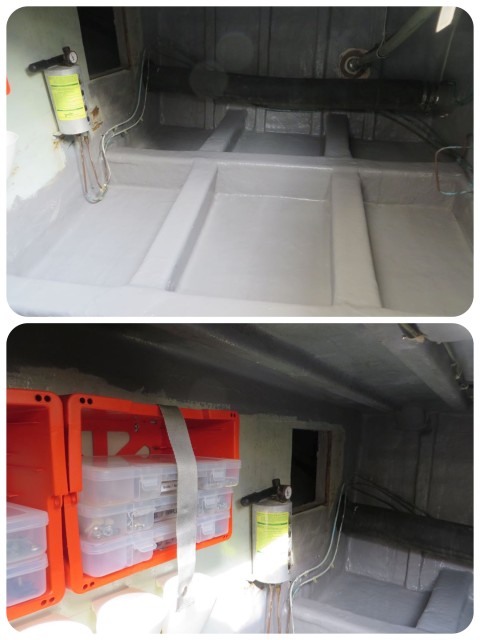
Here We Go Again! | Kindred Spirit
[…] my first “transformation” blog post I wrote about the systems and described our IslandTime wifi connection device, […]